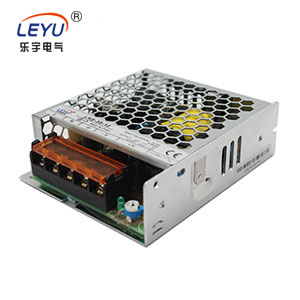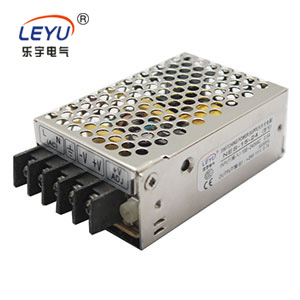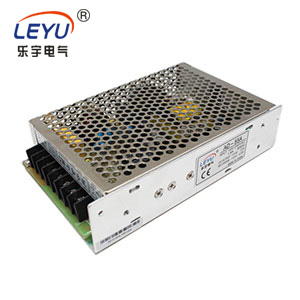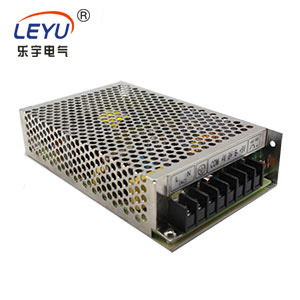Ultimate Guide to MCBs: How They Work, Types, and Best Practices for 2025
Date:2025-06-25 01:47:20 Visit:473
Introduction
Today, as electrical systems keep changing fast, Miniature Circuit Breakers (MCBs) are key to maintaining power safely.
Whether you're handling a home setup or a big factory system, MCBs help stop overloads and short circuits.
But what makes MCBs so essential in 2025? And how do you choose the right one for your specific needs? This comprehensive guide by Leyu Electric walks you through everything—from the working principle and trip curves to selection criteria, maintenance, and compliance standards.
Why it matters: The wrong MCB choice can lead to frequent system downtime, unsafe circuits, or fire hazards. Choosing the right one can enhance longevity, safety, and performance.
What Is a Miniature Circuit Breaker (MCB)?
An MCB is an electromechanical safety device that automatically interrupts an electrical circuit when abnormal conditions—like overcurrent or short circuits—are detected. Unlike fuses, which must be changed after they trip, MCBs can be reset. This makes them a strong and reusable choice for today's power systems.
Key Characteristics:
- Available in 1P, 2P, 3P, and 4P configurations
- Typically rated from 6A to 125A
- Operate on both AC and DC systems
- Compact, modular design suitable for DIN rail mounting
How Does an MCB Work?
MCBs use two core principles to detect and interrupt faulty currents:
1. Thermal Tripping (Overload Protection)
A bimetallic strip heats up and bends when the current exceeds safe levels over time, eventually tripping the breaker.
2. Magnetic Tripping (Short-Circuit Protection)
A high fault current activates an electromagnet, triggering instant disconnection—typically within 2 milliseconds.
Insert labelled diagram: Arc chamber, bimetallic strip, magnetic coil, terminals
This dual-action mechanism ensures both long-term equipment safety and immediate fault isolation.
MCB Types and Trip Curves
MCBs are categorized into trip curve types, each suitable for different load conditions. Choosing the right curve is critical for adequate protection.
Curve Type
Tripping Range (× In)
Common Applications
B Curve
3–5× In
Residential circuits, lighting
C Curve
5–10× In
Motor loads, HVAC, transformers
D Curve
10–20× In
High inrush devices, industrial welding
In = Rated Current (e.g., 16A, 32A)
Using the wrong trip curve can cause nuisance tripping—or worse, allow dangerous faults to persist.
MCB vs RCCB vs RCBO vs MCCB
Understanding how different circuit protection devices compare can guide better purchasing decisions.
Device
Protects Against
Best Use Case
Poles Available
MCB
Overload, short-circuit
All power systems
1P to 4P
RCCB
Earth leakage
Personal protection
2P, 4P
RCBO
Combined overload + leakage
Space-saving setups
1P+N
MCCB
High-current systems
Large industrial facilities
3P, 4P
How to Select the Right MCB
Choosing the proper MCB involves multiple technical considerations:
- Determine Load Current – Total amperage across all devices.
- Voltage Rating & System Type – Ensure compatibility (e.g., 230V, 400V, 50Hz).
- Breaking Capacity (kA) – Match the system's short-circuit level (e.g., 6kA, 10kA).
- Trip Curve Selection – Choose B, C, or D based on the application.
- Pole Configuration – 1P, 2P, 3P, or 4P, depending on phase setup.
Insert MCB selection flowchart or checklist
Installation & Maintenance Best Practices
Proper installation is key to optimal MCB performance. Here's how to do it right:
- Torque tightening: Always adhere to the manufacturer's torque settings (e.g., 2.0 Nm for 63A models)
- Mounting: Use standardized DIN rail mounts with appropriate spacing for heat dissipation
- Testing: Monthly manual trip test ensures mechanism reliability
- Visual Inspection: Check terminals for discoloration, corrosion, or loose connections
Recommended Tools:
- Torque screwdriver
- Thermal scanner
- Insulation resistance tester
Real-World Application: Solar Field in South Africa
Challenge: A 250kW solar facility experienced frequent tripping on inverter outputs due to standard B-curve MCBs.
Solution: After load profiling, B-curve MCBs were replaced with D-curve models tailored for high inrush currents.
Result:
40% reduction in site downtime
Enhanced safety
Fewer service calls from technical staff
"After switching to D-curve MCBs, we saw immediate improvements in uptime and energy stability." — Facility Engineer
Standards & Certifications
Your MCBs must comply with international safety benchmarks. Always verify:
- IEC 60898-1: International residential standards
- UL 489: North American industrial compliance
- NEC 2023: National Electric Code torque + labelling compliance
- RoHS / CE Certified: For EU markets
Add visual trust signals with badges for certification bodies.
Frequently Asked Questions
Q1: Can MCBs replace fuses?
Yes, MCBs offer resettable protection with better fault discrimination.
Q2: What causes an MCB to trip repeatedly?
Common causes: overloads, ground faults, incompatible trip curves.
Q3: How often should I test my MCBs?
Monthly trip testing is ideal for critical systems; annually for standard setups.
Conclusion & Next Steps
MCBs are the unsung heroes of safe electrical infrastructure. When you know how MCBs work and pick the right one, you can keep your equipment secure, save money, and improve things.
Need help? Talk to Leyu Electric for advice, prices, or large orders.








